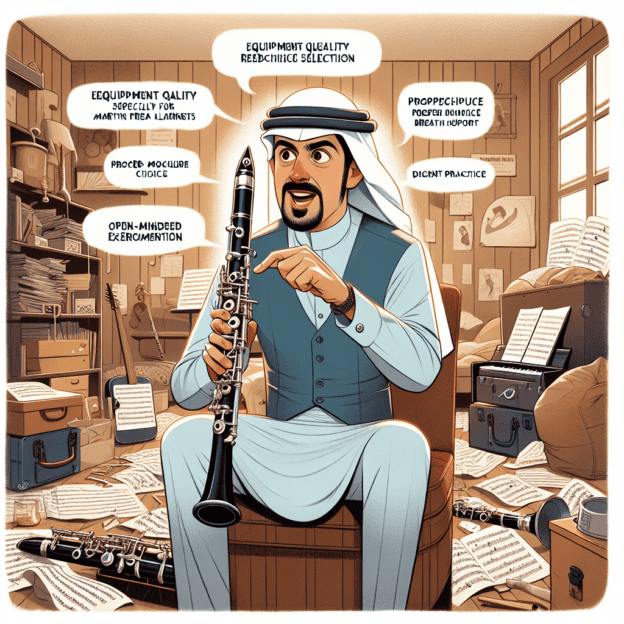Introduction to Martin Freres Clarinet Tone Development
Hey there, clarinet enthusiasts! Let's chat about a topic that's super important for all of us—tone development on the clarinet! Whether you're just starting out or you've been playing for years, improving your Martin Freres clarinet tone is key, and I've got some great tips to help you do just that!
First up, let's talk about equipment quality. A good instrument can really make your sound shine. Martin Freres clarinets are known for their excellent craftsmanship and attention to detail. When you pick up a Martin Freres, you can feel the difference. That smooth finish, the well-placed keys—it all helps create a better tone from the start!
You might be wondering, what gives your clarinet its unique sound? Well, a few things come into play. The mouthpiece, reeds, and how you shape your mouth (embouchure) all work together to create your personal sound. Let's break it down for you.
Mouthpiece Matters
Picking the right mouthpiece is like choosing the perfect topping for your ice cream—it can really make or break the experience! Martin Freres mouthpieces are made to improve sound quality, giving you clarity and precision. Try out different facing lengths and tip openings to find what feels and sounds best to you. You'll be amazed at how a small change can transform your clarinet's sound from dull to dazzling!
| Mouthpiece Feature | Effect on Tone |
|---|---|
| Facing Length | Affects resistance and flexibility |
| Tip Opening | Influences volume and brightness |
| Baffle Shape | Changes tone color and projection |
Reed Selection
Ah, the reed—a tiny piece of cane that makes a big difference. Choosing the right reed strength is crucial for getting the tone you want. While you might prefer to stick with reeds similar to what you're used to, trying something new can be eye-opening! A softer reed might help you articulate better, while a harder one can give you a fuller tone. It's kind of like finding the right balance when you're driving—you need to figure out just the right amount of gas and brake for a smooth ride!
Embouchure: Your Secret Ingredient
Now, let's talk about embouchure. How you position your mouth when you play can really change your sound. Try for a mouth position that's relaxed but firm. Imagine you're chewing gum while having a conversation—find that comfortable spot where you can still speak clearly. If you hold your mouth too tight, your tone might sound squeezed. A looser embouchure can create a more open sound. Experiment and listen to how it changes!
Breath Support
You've probably heard this before—your breath is super important. Good breath support helps you keep a steady air flow, which keeps those beautiful notes going. Try breathing deeply from your belly instead of just your chest. Picture your stomach expanding as you play. It's like giving your clarinet a big, warm hug with a constant gentle breeze!
Practice Tips
Practice is important, but it's not just about playing a lot. Focus on scales and articulation exercises that push you to improve. Scales might seem boring, but they're the foundation of your technique! Practicing with a purpose will help your tone become richer and more controlled. Sometimes, working on just one scale during a practice session can be more helpful than rushing through all of them.
Listening Skills
Listen to recordings of yourself and other musicians. Pay attention to how they sound. What do you like about their tone? What would you like to improve in your own playing? It's like having a personal guide, showing you where you can grow as a musician.
Experimentation
Don't be afraid to try new things! Play at different volumes—soft, loud, then soft again—and see how it changes your sound. Record yourself and listen back to find those “wow” moments. There's no single correct way to find your sound; it's all about what feels and sounds good to you.
Conclusion
Remember, getting that perfect tone on your Martin Freres clarinet takes time, but it's a fun journey. Tone development is about both your instrument and you! Keep practicing, exploring, and most importantly, enjoy every note you play. Happy playing!
Table of Contents
- Introduction to Martin Freres Clarinet Tone Development
- Mouthpiece Matters
- Reed Selection
- Embouchure: Your Secret Ingredient
- Breath Support
- Practice Tips
- Listening Skills
- Experimentation
- Conclusion







